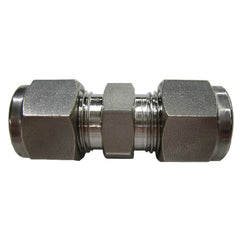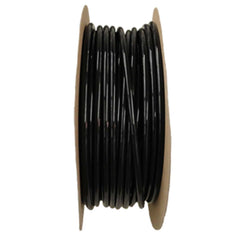Misting and Cooling Products
Misting & Cooling Nozzles & Related Items
View: .3mm Nozzle Video .5mm Nozzle VideoThese patented misting nozzles are designed to accomplish an extremely high emission velocity with a low flow rate. Liquids are atomized into aerosol particles, which flash-evaporate evenly into the environment, creating the fine mist. The nozzles can atomize liquid even in climates with fairly high relative humidity. We have brass mist nozzles, nickel plated mist nozzles, and stainless steel mist nozzles. We have regular mister nozzles, cleanable mister nozzles, and anti-drip mister nozzles.
What is the difference between an impeller nozzle and an impingement nozzle? Our mist heads are impeller nozzles, with the pin inside the nozzle body. Impingement nozzles have a pin on the outside of the nozzle head. The impingement nozzle design tends to be rather expensive and used in special applications. With some impingement nozzle types, the pin may move from its original location, causing an uneven flow, or may even break.
Which misting nozzle is best? Our impeller misting system nozzles are less expensive and very reliable. They create an extremely fine mist, with a high percentage of droplets at less than 50 microns in size. Basically, the pin (impeller), orifice, and nozzle body are designed in such a way that when fluid is forced through, a very fine cone-shaped fog is created. We have low pressure misting nozzles and high pressure misting nozzles. Our quality control team ensures each atomizing nozzle maintains the required design specifications, tolerances, and consistent high quality.
Our misting system nozzle is excellent as a greenhouse misting nozzle, a patio mister nozzle, a cooling mist nozzle, and a fan mister.
15mm/.006" orifice (yellow o-ring) For best results, we suggest a minimum pressure of 250 psi, and a maximum pressure of 1500 psi. The spray is cone-shaped, with an angle of approximately 55 to 70 degrees. A nozzle with this size orifice produces the smallest droplet size. This may be ideal in a situation where limited moisture and liquid flow is desired.
.2mm/.008" orifice (red o-ring) For best results, we suggest a minimum pressure of 250 psi, and a maximum pressure of 1500 psi. The spray is cone-shaped, with an angle of approximately 55 to 70 degrees.
.3mm/.012" orifice (black o-ring) For best results, we suggest a minimum pressure of 45 psi, and a maximum pressure of 1500 psi. The spray is cone-shaped, with an angle of approximately 65 to 75 degrees.
.4mm/.016" orifice (brown o-ring) For best results, we suggest a minimum pressure of 45 psi, and a maximum pressure of 1500 psi. The spray is cone-shaped, with an angle of approximately 80 degrees.
.5mm/.020" orifice (green o-ring) For best results, we suggest a minimum pressure of 45 psi, and a maximum pressure of 1500 psi. The spray is cone-shaped, with an angle of approximately 80 degrees.
Misting & Cooling Connectors & Fittings
We have all the connectors you need to build your misting and cooling system. Compression fittings work with stainless steel tubing, copper tubing, or nylon tubing. Push to connect fittings work with just the nylon tubing.The stainless steel and brass compression fittings are both rated for high pressure systems, up to 3000 psi if used with stainless steel tubing, and up to 1000 psi if used with copper tubing. To use, simply turn the nut to finger-tight and insert the humidification line; then, turn the nut 1 1/4 turns to create an effective seal.
The brass push to connect fittings are rated for a working pressure up to 1000 psi, and the nickel plated push to connect fittings are rated for a working pressure up to 250 psi. Both are sometimes referred to as a push-in fitting, push connect fitting, or push fitting. They are simple and easy to install and reconfigure, and no special tools are needed. Just cut the nylon tubing to size and push in firmly for an instant seal. To remove the tubing, simply push in the sleeve.
Misting & Cooling Tubing & Related Items
Our nylon (polymide 12) tubing is high pressure. It is heat stabilized, uv stabilized, plasticized, and semi-flexible. It is also resistant to chemicals, friction, and abrasion. All nylon tubing is a black color.Working pressure is 1100 psi at 75 degrees; burst pressure is 2800 psi at 75 degrees.



